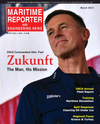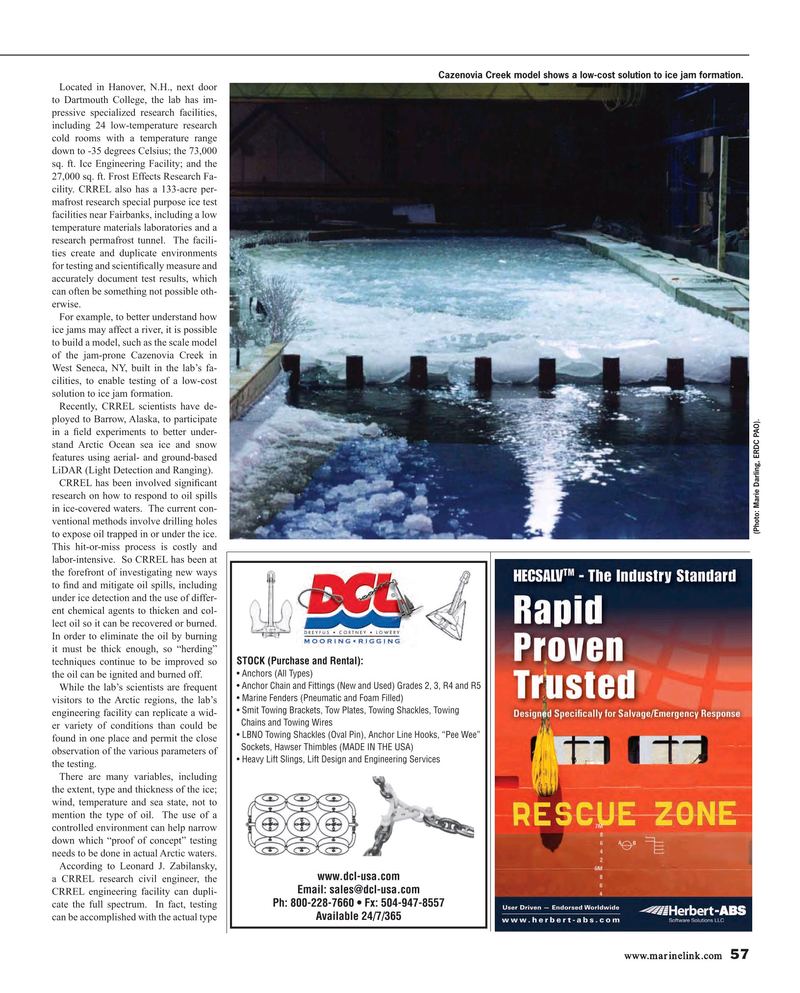
Page 57: of Maritime Reporter Magazine (March 2015)
U.S. Coast Guard Annual
Read this page in Pdf, Flash or Html5 edition of March 2015 Maritime Reporter Magazine
Cazenovia Creek model shows a low-cost solution to ice jam formation.
Located in Hanover, N.H., next door to Dartmouth College, the lab has im- pressive specialized research facilities, including 24 low-temperature research cold rooms with a temperature range down to -35 degrees Celsius; the 73,000 sq. ft. Ice Engineering Facility; and the 27,000 sq. ft. Frost Effects Research Fa- cility. CRREL also has a 133-acre per- mafrost research special purpose ice test facilities near Fairbanks, including a low temperature materials laboratories and a research permafrost tunnel. The facili- ties create and duplicate environments for testing and scienti? cally measure and accurately document test results, which can often be something not possible oth- erwise.
For example, to better understand how ice jams may affect a river, it is possible to build a model, such as the scale model of the jam-prone Cazenovia Creek in
West Seneca, NY, built in the lab’s fa- cilities, to enable testing of a low-cost solution to ice jam formation.
Recently, CRREL scientists have de- ployed to Barrow, Alaska, to participate in a ? eld experiments to better under- stand Arctic Ocean sea ice and snow features using aerial- and ground-based
LiDAR (Light Detection and Ranging).
CRREL has been involved signi? cant research on how to respond to oil spills in ice-covered waters. The current con- ventional methods involve drilling holes (Photo: Marie Darling, ERDC PAO).
to expose oil trapped in or under the ice.
This hit-or-miss process is costly and labor-intensive. So CRREL has been at the forefront of investigating new ways to ? nd and mitigate oil spills, including under ice detection and the use of differ- ent chemical agents to thicken and col- lect oil so it can be recovered or burned.
In order to eliminate the oil by burning it must be thick enough, so “herding” techniques continue to be improved so STOCK (Purchase and Rental): s

 56
56

 58
58
